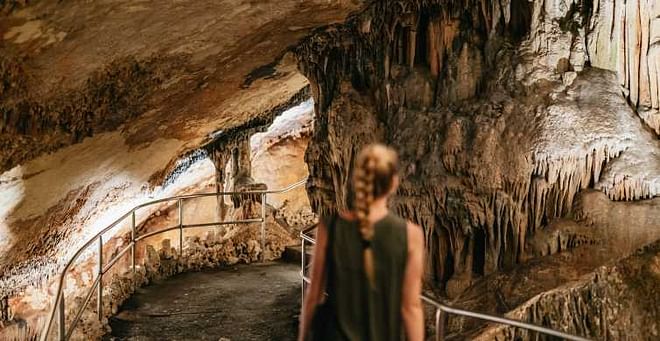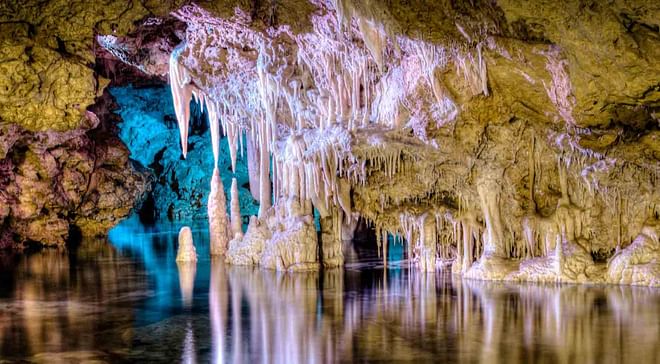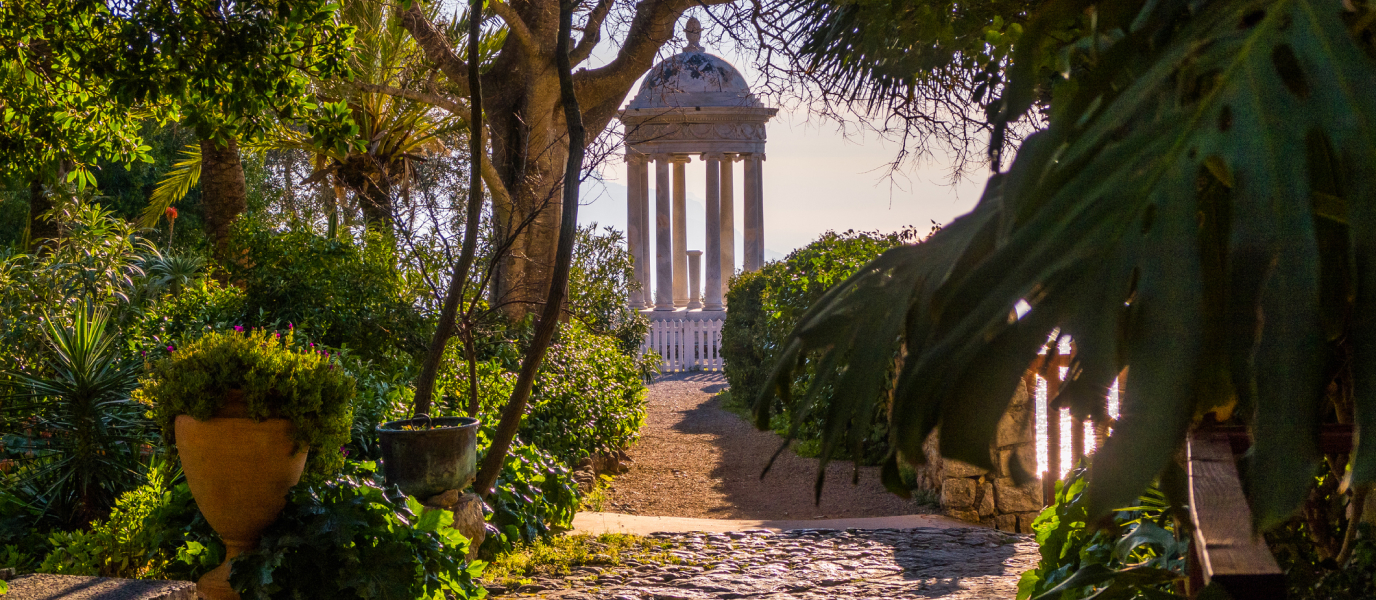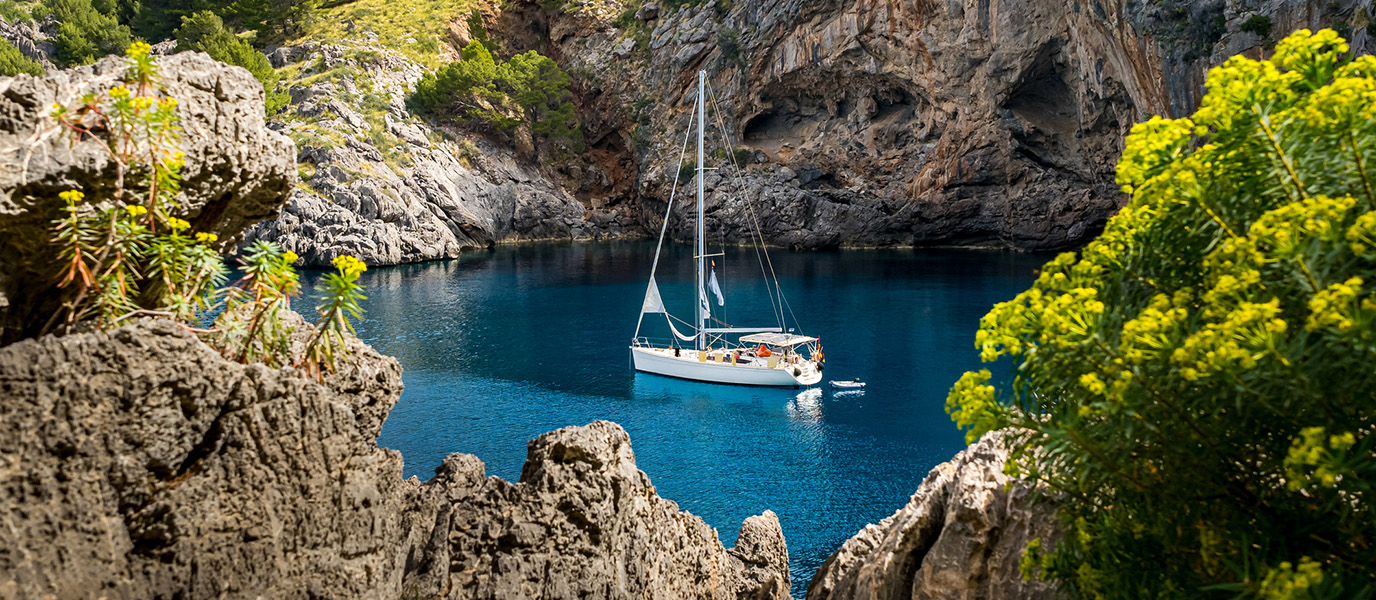Sometimes, we must climb up to remote locations or, in this case, descend deep into the bowels of the Earth in order to discover amazing spots of natural beauty. It is usually found in spots that are difficult to access, where man has been unable to leave his mark. This is the case with the Drach Caves, the extraordinary caverns that delve 1,200 metres into the island’s subsoil and present visitors with the origins and beauty of nature in its essence. Here, they can view distinct rocky formations and sail across underground lakes while listening to the sounds of water dropping down from the cavern’s ceiling. These droplets are responsible for the ever-so-slow formation of the cave’s stalactites and stalagmites, the involuntary creators of some incredible natural scenery that should not be missed.
Related experiences
The origin of Drach Caves
These cavities were formed in the interior of carbonate rocks, between 11 and 5.3 million years ago, dating them back to the Late Miocene Period.
As impossible as it seems, filtering rainwater is responsible for sculpting these caves over time, since limestone rocks dissolve easily upon contact. So, for centuries now, a gradual erosion process has led to the creation of the caves and lakes we can see now, with the dripping water covering the cavern of stalactites and the corresponding stalagmites. These latter form on the ground as a result of the dripping water and the calcium carbonate that falls off of the stalactites. In some cases, they even connect with the stalactites to form unique slender columns.
Drach Caves over history
The first mention of these lovely caves dates back to a message sent in 1338 by the then governor of the island, Rover de Rovenach, to the mayor of Manacor. By 1784, Cardinal Despuig included these caves in his map of Majorca.
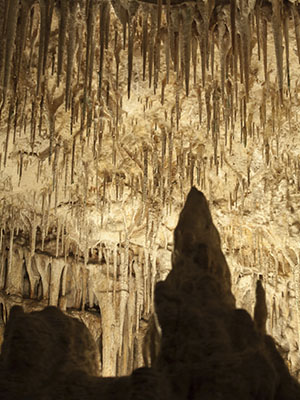
However, the first actual exploration of the caves would not take place until the late 19th century. These first explorations were made by cartographer and speleologist M. F. Will and, years later, by E. A. Martel. In his exploration, Martel uncovered new cavities and ultimately, his name would be given to the large lake inhabiting the caves. A year prior to the explorations made by this Frenchman, fellow countryman Jules Verne had already mentioned the caves in his novel Clovis Dardentor.
Visiting the Drach Caves
Today, it is possible to visit the caves thanks to the conditioning works carried out by Catalan engineer Carles Buigas, between 1922 and 1935, which included proper underground electric lighting. Once inside the caves, the following highlights can be found:
- Lovely rock formations such as ‘The Flag’, a canvas-shaped structure whose attractive colours are the result of distinct mineral filtrations, or ‘The Snow-Capped Mountain’, so named because of its white colour, the result of calcium carbonate filtered by rain.
- Lake Martel. One of the world’s largest underground lakes, measuring over 170 metres in length and between 4 and 12 metres in depth. Visitors can sit in the lake’s amphitheatre and enjoy an exclusive classical music concert interpreted by a quartet made up of two violins, a cello and a harpsichord. Clearly, this unique context, with the stalactite forest in the background, as well as the exceptional cave acoustics and musicians performing inside a boat, come together to make this concert an unforgettable experience.
Finally, visitors can follow the musicians’ lead and cross the lake by boat or they can walk along the side bridge. Once you reach the other side and pass through the Cave of the French, a cavity that was visited in ancient times, you will see the stairway to return to the outside world. Outside, the charming town of Porto Cristo is awaiting, with its lovely beaches, and the neighbouring Hams Caves, as well as other points of interest that well deserve a visit, such as Manacor or Capdepera.





































































